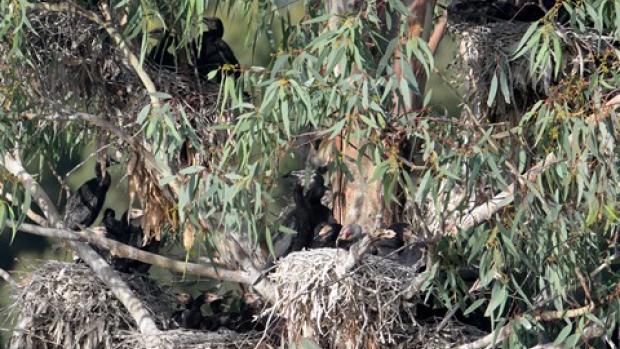Loading
Stepping out into the natural spotlight

When it comes to the environmental spotlight, Guttrum and Benwell state forests are usually hidden in the shadows cast by the neighbouring Gunbower Forest, but not this summer.
Last year’s extensive Murray River floods have thrown the spotlight sharply back onto Guttrum and Benwell forests, and revealed the usually hidden beauty of two of the area’s most important wetlands.
Reed Bed Swamp is a large open-water wetland in Guttrum State Forest and is a significant site in the region.
“Reed Bed Swamp is quite a deep and open wetland compared to Gunbower Forest wetlands that are old river channels,” North Central Catchment Management Authority (CMA) Project Officer Genevieve Smith said.
“This makes it a special wetland in the forest, especially when it floods. Last year’s floods now have Reed Bed Swamp teaming with life. We have counted at least 30 bird species in and around the swamp, but the standout has been the little pied cormorants.
“There are about 1000 of them and they have built about 200 nests in the fringing red gums that sit in the water. It is an amazing sight and shows how tuned-in they are to natural conditions.”
Before river regulation, water would flow into Reed Bed Swamp most years. In recent decades, it has been dry for seven or eight years out of every 10.
“We used to see this sort of thing all the time. Even in the 1970s and 80s scientists were documenting this kind of bird activity at Reed Bed Swamp, but we haven’t seen it for a long time. This is a return to the floods of the old days,” Ms Smith said.
“Because Reed Bed is low on the floodplain it would have received inflows from the Murray River every year and because it so deep, water would naturally have stayed in the wetland for up to six months, creating perfect waterbird breeding habitat.
"Today, the wetland fills less often and it dries up within a couple of months because the flood peaks are a lot shorter.”
The current conditions have also seen the return of native water plants including nardoo and the threatened wavy marshwort.
“It’s great to know these areas can still support a range of significant species,” Ms Smith said.
“This flood has confirmed to us that despite many years of dry, these areas are still important for both flora and fauna.
“These birds and plants are very special, and form an important part of the Murray River ecosystem, and we are proud to work the Department of Environment, Land, Water and Planning to manage them on behalf of the community.
“Guttrum and Benwell forests really are a key part of the local natural history, and communities can be proud to know that with a little push every now and then they can still take centre stage.”
For further information please contact:
Communications Officer, North Central CMA
PO Box 18, Huntly VIC 3551
t: 03 5448 7124
e: info@nccma.vic.gov.au
